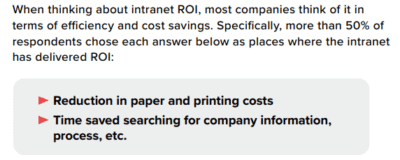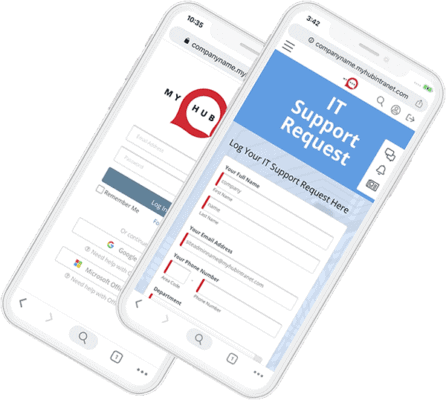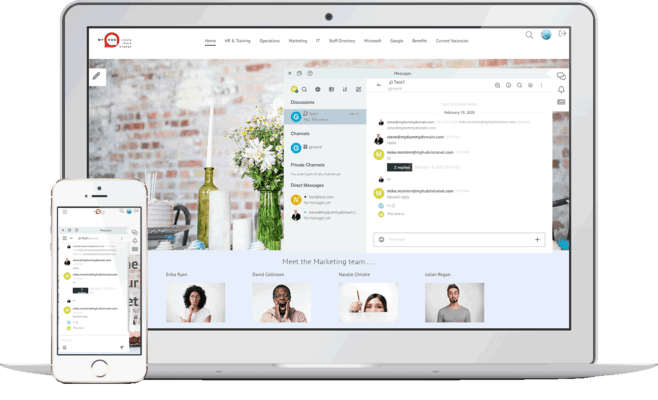Reduce Office Printing Costs and Save the Environment
Every business is under pressure to cut operational costs, and one of the easiest places to start is the office printer. Take a moment to think about how many unnecessary copies of documents, customer orders, approval forms, and emails are printed daily in your workplace. Now factor in the cost of photocopier ink, toner, and equipment maintenance.
The total cost is likely much higher than you expected, and the impact doesn’t stop at your bottom line. It’s also damaging the planet. In fact, 45 percent of office printouts are discarded by the end of the day. This represents not only wasted money, but also a significant loss of trees and environmental resources.
Paper Waste in the Digital Age
Ironically, the rise of the digital workplace has not reduced our dependency on paper, in fact, the opposite has happened. Despite advances in cloud storage and digital communication, paper consumption has continued to rise. According to the Environmental Paper Network, global paper usage has quadrupled over the past 50 years.
Reducing paper usage is no longer just a cost-saving tactic, it’s a strategic move for businesses that want to boost their brand reputation and demonstrate commitment to sustainability. In a recent study, 89% of Gen Z consumers expressed concern for the planet, and 94% believed businesses should take an active role in solving environmental challenges.
Why Paper Reduction Matters
From recycling initiatives to adopting digital tools, there are many simple yet powerful ways to reduce your business’s environmental footprint. Cutting back on paper use is among the most effective, and often overlooked, solutions. By making this shift, companies can increase productivity, save money, and position themselves as environmentally responsible in the eyes of customers and employees alike.
So how can your company start reducing paper waste? Begin with the most impactful changes. Below is a practical strategy you can implement right away.
1. Switch From Paper To Online Approval Forms
Whether it’s an expenses claim, purchase order, or vacation request, every organization relies on forms. But traditional paper-based systems are inefficient. Paper forms are often misplaced, misread, or delayed in the approval chain.
Digital approval forms offer a smarter alternative. They’re faster, more accurate, and more secure. With an intranet’s integrated form builder, you can digitize your entire approval process in just a few clicks.
Here’s how it works: employees fill out the form online, and it’s automatically routed to the correct manager for review. The process is trackable, mobile-friendly, and eliminates the paper trail. This means fewer errors, faster approvals, and significant savings in both time and resources.
What’s more, automating business processes minimizes the risks of fraud and data loss. It also ensures that nothing falls through the cracks, something that’s all too common with manual, paper-based systems.
2. Use Electronic Document Storage to Boost Efficiency
Still clinging to dusty filing cabinets full of old documents? If finding the right file is a daily struggle, it’s time to upgrade. Moving to electronic document storage is a simple, effective way to streamline operations and cut back on paper usage.
Besides being eco-friendly, digital storage reduces the need for physical space and lowers operational costs. Employees no longer waste time searching through drawers, they can quickly locate documents through a simple keyword search. Plus, electronic records are easier to back up, reducing the risk of lost or damaged files.
By switching to a digital document management system, your business enhances data accessibility, increases productivity, and strengthens its environmental credentials.
3. Introduce a Fully Paperless Office Strategy
The concept of a paperless office is not new, but too many organizations implement it half-heartedly. Reducing your reliance on paper requires a comprehensive shift in how you manage projects, share information, and approve tasks.
Use online collaboration tools like Google Docs or Microsoft Teams to edit and share documents in real-time. This prevents the need for printed drafts and minimizes version control issues. For instance, if you’re developing a new policy, have all stakeholders contribute to the same digital document rather than printing multiple versions.
Going paperless is not only cost-efficient, it also fosters clearer communication, reduces errors, and supports your company’s commitment to sustainability.
4. Think Before You Print
Encouraging employees to pause before hitting “Print” is one of the most effective paper-saving tactics. Place reminders like “Do I really need to print this?” near printers and include on-screen pop-up messages to prompt reflection.
Use the company intranet to share weekly statistics on paper consumption, along with goals and visual targets. This promotes accountability and helps staff visualize the company’s progress in becoming more environmentally responsible.
When printing is unavoidable, default to double-sided and multi-page printing. Printing two pages per side and on both sides can fit four pages on a single sheet, significantly cutting down on paper waste.
For industries that require printed records for compliance or legal purposes, invest in scanning apps and digital signature tools. These alternatives provide the same documentation benefits without the environmental toll.
5. Limit Print Runs for Flagship Documents
Flagship documents like annual reports or product brochures often lead to excessive printing that’s rarely necessary. Don’t assume every client or employee wants a physical copy.
Instead, offer a PDF version or secure web link and print hard copies only upon request. Not only does this save resources, but it also aligns with digital best practices that many customers now expect.
For internal use, consider keeping one printed copy in a communal area, like the break room or reception, rather than handing out dozens of copies no one reads.
6. Switch to Paperless Billing and Invoicing
Paperless billing is now the standard for many businesses. Modern accounting platforms like QuickBooks, Xero, and FreshBooks come with built-in electronic billing options, making implementation simple and efficient.
Make a point to request digital statements from your bank, and ask your vendors and suppliers to do the same. Proactively communicate with your customers to let them know that digital invoicing is available and encourage them to opt in.
Transitioning to paperless billing reduces clutter, speeds up payment cycles, and helps establish your business as a forward-thinking and environmentally conscious organization.
7. Communicate Electronically To Reach Everyone
Need to update staff on some important company news? Or perhaps a monthly employee newsletter is your go-to communication tool? Consider switching to electronic communication platforms to ensure your messages reach everyone efficiently, especially with more staff working remotely or in non-desk roles.
Don’t limit communication to just email. Use SMS, instant messaging, and your intranet’s newsfeed to share updates in real time. These tools provide faster, more dynamic ways to reach your team, wherever they are.
Even better, use your intranet’s social features like activity walls, employee blogs, and forums to create two-way conversations. This boosts employee engagement and gives everyone a voice in the workplace.
8. Use An Electronic Staff Directory For Faster Access
Printing staff directories is a thing of the past. Paper versions are often outdated as soon as they’re distributed. With a digital staff directory, updates are easy and instant, saving both time and money.
Employee directory software lets you go beyond names and phone numbers. Showcase team members’ skills and expertise, helping to foster internal collaboration and knowledge sharing. This not only improves workflow efficiency but also builds a more connected, knowledgeable organization.
9. Repurpose Unwanted Printed Paper To Reduce Waste
Don’t throw out that agenda from yesterday’s meeting, reuse it! Encourage employees to use the back of old printouts for note-taking or internal messages. There’s always leftover scrap paper, even with careful printing practices.
Alternatively, use instant messaging instead of paper notes to quickly share information. Messages can be stored, searched, and retrieved easily, making them a smarter and more sustainable choice for office communication.
10. Send E-Cards For Holidays And Celebrations
Sending holiday greetings or thank-you cards is a valued tradition. This year, switch to e-cards instead of printed ones. You’ll save money on cards, envelopes, and postage, while also making a positive environmental impact.
E-cards can be easily personalized and instantly delivered, making them a modern and eco-friendly way to stay connected with clients, customers, and employees.
11. Recycle, Recycle, Recycle – And Then Some
If you haven’t already, install clearly marked recycling bins throughout the workplace. Bright colors and strategic placement serve as daily reminders for employees to recycle responsibly.
In addition, always buy recycled paper products. Using recycled copy paper reduces the demand for new materials, helping to combat deforestation, climate change, and pollution. It’s a small step with a big environmental payoff.
12. Invest In An Intranet To Drive Digital Transformation
Your intranet can help implement every one of these paper-saving strategies, from automating workflows and enabling a paperless office, to hosting an online employee directory and digital newsletters.
According to the 2020 Evolution of the Intranet Survey by CMSWire and Ragan Communications, organizations reported strong ROI from intranet usage in multiple areas:
- 8% saw a reduction in paper and printing costs
- 50% saved time searching for company information
- 7% cited streamlined workflows
- 32% reported fewer all-company emails
- 3% replaced paper employee directories

Digital Intranet: Your Engine for Business Efficiency
Beyond just reducing paper, an intranet improves communication, enhances collaboration, and increases engagement across your organization. It supports every aspect of modern business operations, helping you work smarter, faster, and greener.
Want to learn more about how a company intranet can support your digital workplace goals? Reach out to the friendly team at MyHub. Our intuitive, cost-effective intranet platform is easy to set up and fun to use, no tech expertise required!
Start exploring today with a free demo or sign up for a 14-day free trial. When it comes to return on investment, your intranet’s paper-saving features are just the beginning.
FAQ Section
Why should my business reduce paper usage?
Reducing paper usage helps lower operational costs, improve efficiency, and align with environmental sustainability goals. It also meets the growing consumer demand for eco-conscious business practices.
What are some simple ways to start saving paper in the office?
Begin by digitizing approval forms, storing documents electronically, and using cloud-based collaboration tools. Encourage employees to think before printing and to utilize digital note-taking methods.
How can going paperless benefit my business financially?
Going paperless reduces expenses related to printing, paper, ink, and physical storage. It also minimizes the risk of errors and delays, leading to improved productivity and cost savings.



